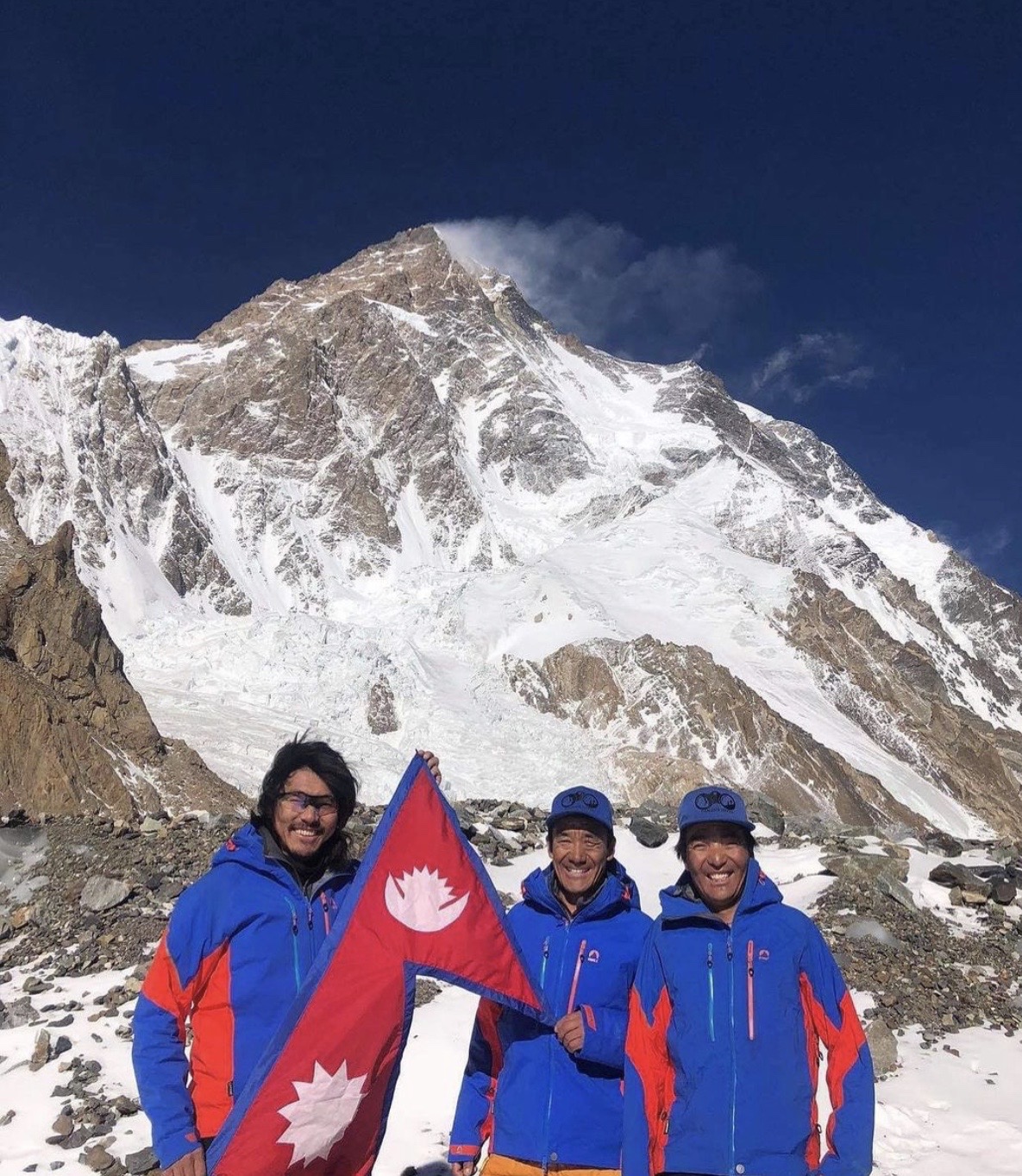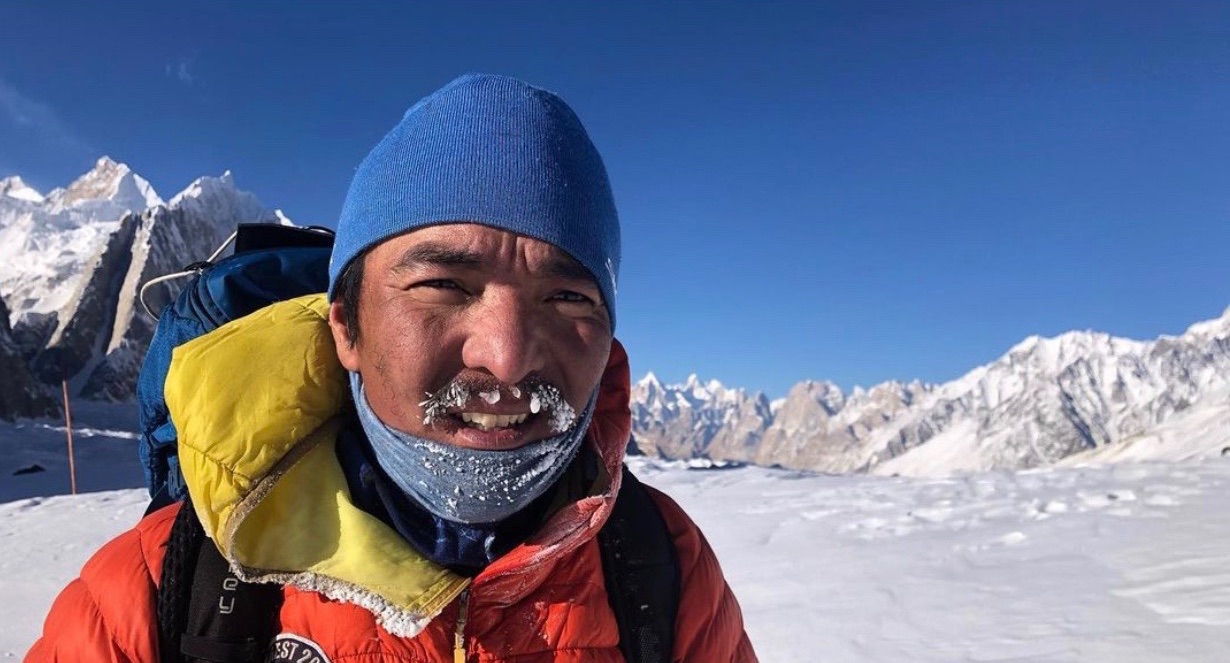K2 and life’s other mountains

When he was a boy, Mingma Gyalje Sherpa, used to look out the window of his home in the Rolwaling Valley at the imposing west face of Mt Chobutse. It was dwarfed by higher nearby peaks like Gauri Shankar and Melungtse, but the 6,686m high mountain’s sheer beauty had an irresistible pull.
His village was at 4,200m and the boy used to take the family yak herd to graze in high pastures up to 5,300m every monsoon and gaze at the surrounding peaks from sunrise to sunset.
“My relatives would bring back chocolates from foreign climbers, and I used to think that if I became a porter, I would also get to eat lots of chocolates,” he smiles.
At age 19, he joined his uncle who was with a Japanese expedition on Manaslu. He reached 6,400m but had to turn back due to bad weather. He joined another expedition on Lhotse, which also abandoned the climb halfway. In 2009, he climbed Mt Everest, and later climbed it five times, but he always had the urge to climb for himself and not for others.
Mingma G, as he now calls himself, decided to climb Chobutse solo to fulfill his childhood wish, and also because it was more difficult than the higher peaks he had climbed. Everyone told him it was a crazy idea, and he himself agreed. He made it to the top in 2015, and was snowed in for two days on the way down, but survived.
He then went on to climb other challenging Rolwaling peaks like Chekigo and Parchamo, as well as other climbs of Ama Dablam, Paldor and Himlung.

Mingma G is that new breed of Nepali mountaineers who do not just help foreigners get to the top, but climb for the sheer adventure. That is why he decided to take a team to K2 in December 2020—because the second highest mountain had never been climbed before in winter.
Located in the Karakoram on the Pakistan-China border, K2 lives up to its nickname as 'the savage mountain'. One in every five climbers has been killed in trying to climb it. This year alone, four climbers died on K2.
K2 is steep, has frequent rockfalls and avalanches, and demands technical skills at high altitude. To do this in winter, when temperatures reach -50 Celsius with hurricane force winds had been considered impossible.
"It was very difficult. It was very cold,” says Mingma G with typically laconic understatement.
Given the background of the Nepali climbers he grew up around, Mingma G empathises with the plight of the porters from Baltistan, Pakistan. "While trekking base camp, they were carrying our load but they were eating less, sleeping on snow in thin sleeping bags and think mattresses...they are the ones who made our K2 successful in the beginning," he writes on his Instragram.
Mingma’s all-Sherpa Nepali expedition arrived at Base Camp in December after a four-day march-in and immediately started fixing ropes on the mountain. As founder of Imagine Nepal, Mingma and other Nepalis had financed their expedition with a GoFundMe campaign because of loss of income due to the Covid-19 pandemic.
After numerous setbacks due to weather and poor health, Nepali member of three other expeditions decided at Base Camp to make their own attempt to climb K2. This was his chance to make an assertion of national pride and endorse homemade Himalayan mountaineering competence.
"It was a spontaneous decision, we met Nims Purja on the mountains and talked about climbing together not for individual glory, but for national pride, so we teamed up,” he recalls.
On the night of 16 January, the ten Nepali climbers were in Camp III at 7,365m. The wind was howling, it was bitterly cold, and team members were reporting signs of frostbite, and the altitude was beginning to take its toll.
"It took us three or four minutes to cover every step," Mingma recalls. "K2 is much more difficult than Mt Everest.”
The ten climbed all day, past the Bottleneck, the treacherous near-vertical slopes with blue ice, and finally the gentle slope before the summit dome. There, the Nepalis had decided not to go to the top one by one, wait for everyone 10m below the summit, and walk up collectively.

It was 5PM on 16 January when they joined hands, sang the Nepali national anthem and took collective steps to the summit where they waved Nepali double triangle flag. They had done it: the first ever winter ascent of K2, the latest and greatest feat in mountaineering for the team.
“We did it to make the argument about who arrived first, irrelevant. We climbed the peak together, we sang the national anthem together,” says Mingma, who considers it his most important climb.
After all those Everest summits, Lhotse, and even the difficulty on Chobutse, K2 in winter was a whole new dimension.
But Mingma has barely any time to rest. He has a busy schedule ahead in 2021, with plans to climb Annapurna in March, Mt Everest and Lhotse again in April-May with clients. In June, he is going back to K2 and other Karakoram peaks. In September, he will be in Kathmandu only for two days before heading off to Manaslu.
Even with all the physical and mental toll that climbing takes, Mingma is happy doing what he is doing. There is a tinge of concern that he puts his family members through so much worry, but they also understand that climbing is his passion.
Mingma’s other worry is that he can only sustain his own climbing by guiding clients to summits. This is a dangerous profession, and as he gets older he will have to find ways to pay for his own future adventures. But the smile on his face shows that he is not really that worried: “I'm young now, I'm strong, everyone wants me to climb.”




